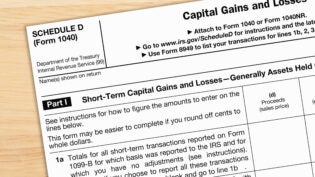Getting Your Finances in Order for Year-End
By: Debbie Fletcher

To run a successful business, getting your finances organized is absolutely essential, not least when preparing for year-end. By keeping track of your profits and losses, you’ll be able to meet your legal responsibilities and ensure every required statement is in the right place.
But, unless you’re clued up about accounting systems and tax forms, getting your finances in order is no mean feat. With this in mind, here’s a quick guide on the steps you need to take when closing out your books for the end of the fiscal year.
Before year-end
- Review profit and loss statements – Profit and loss statements give you a snapshot of your financial performance, covering everything from revenue to expenses. You may find that money is available to make large purchases before the end of the year, which allows for depreciation.
- Verify vendor and lender files – Take the time to review paperwork relating to your vendors, which includes current outstanding loans. Double check all of your vendor 1099 forms are also up-to-date and accurate, especially if they have been inputted into your accounting system.
- Conduct an inventory assessment – Even if you don’t sell products, an inventory assessment can cover office equipment and supplies. Figure out how much capital you have wrapped up in current inventory, make adjustments for anything that’s broken or requires repair, and address the terms of leasing contracts.
- Report benefits of outgoing W-2s – Benefits relate to the organization as a whole and can include things like health insurance, transportation subsidies, and education reimbursement programs.
- Create a budget for next year – Reviewing statements from the current year will better inform your budget for the following year. Try to identify patterns with expenditures and use this information to focus your efforts on key areas moving forward.
After year-end
- Print end-of-year statements – It’s often helpful to print out your profit and loss statements as well as your balance sheet to maintain a physical record of financial performance.
- Make depreciation entries – Depreciation decreases the amount of taxable income you must report on your taxes. You may need the help of an accountant for this, but assets must be wholly owned by the company, used to produce income, have a determinable lifespan, and last more than one year.
- Reconcile your accounts – Go through your credit and bank accounts, reconcile all charges and payments, then make sure they match your records. Investigate any unexplained discrepancies you come across.
- Print and mail tax forms – You must print and mail certain forms by a certain time if your fiscal year coincides with the calendar year. Even so, some deadlines may still apply for 1099s, 1096, and payroll forms. Ask your accountant for assistance if required.
Getting your finances in order for year-end can feel overwhelming, particularly for small businesses with limited staffing and skillsets. However, the easiest way to complete this responsibility is through extensive planning and preparation. Get the above steps covered and things will run smoothly.
2711 Views












